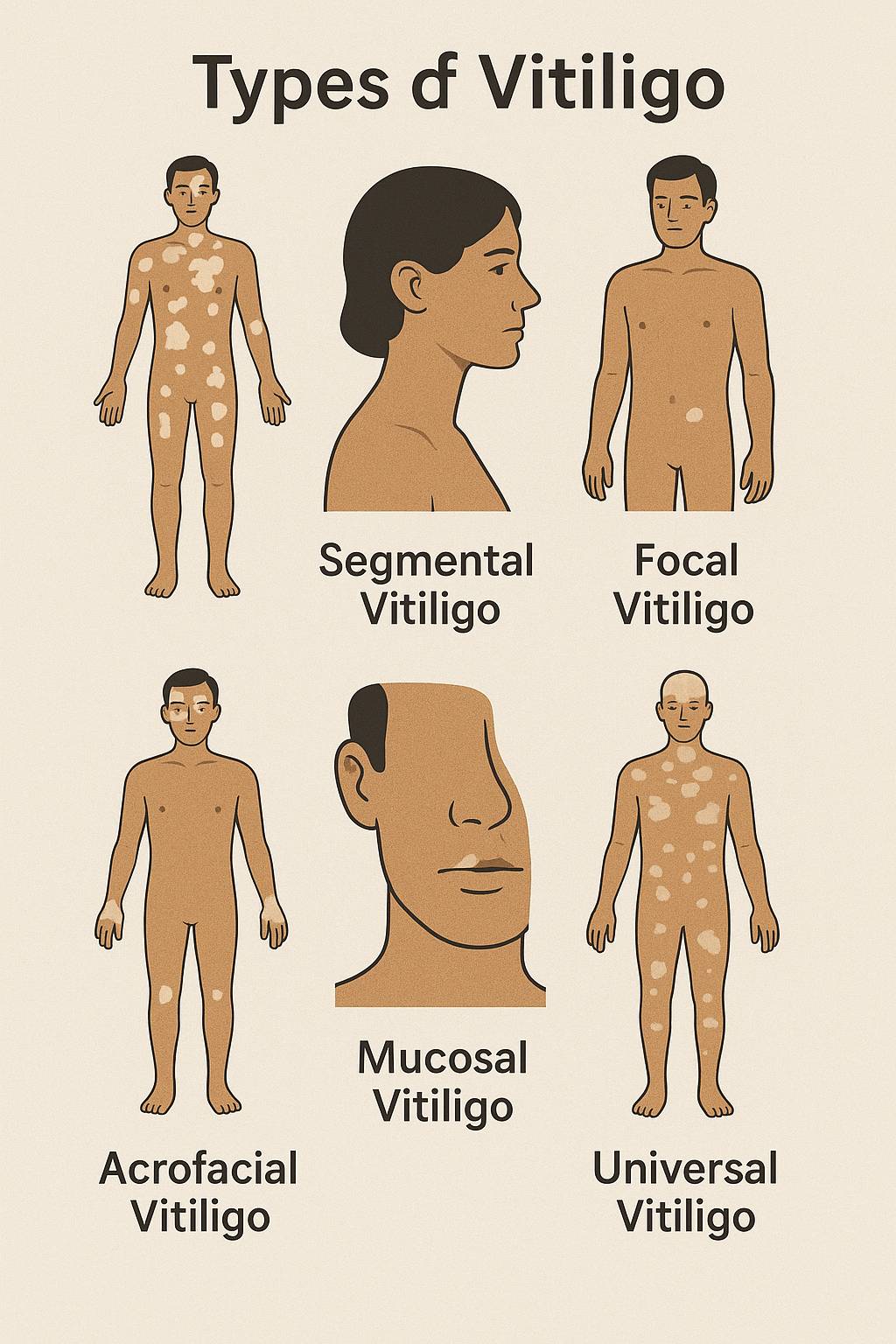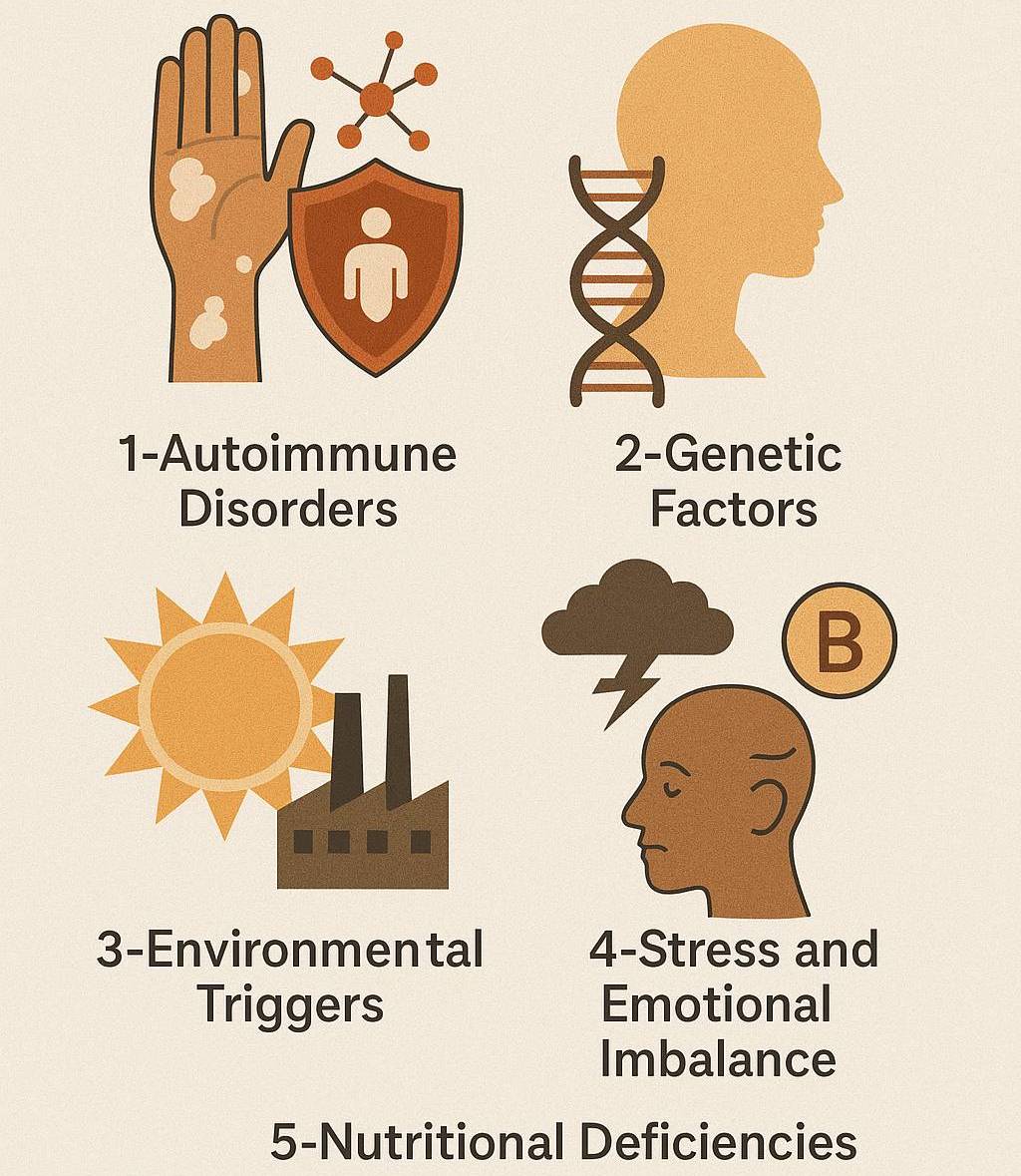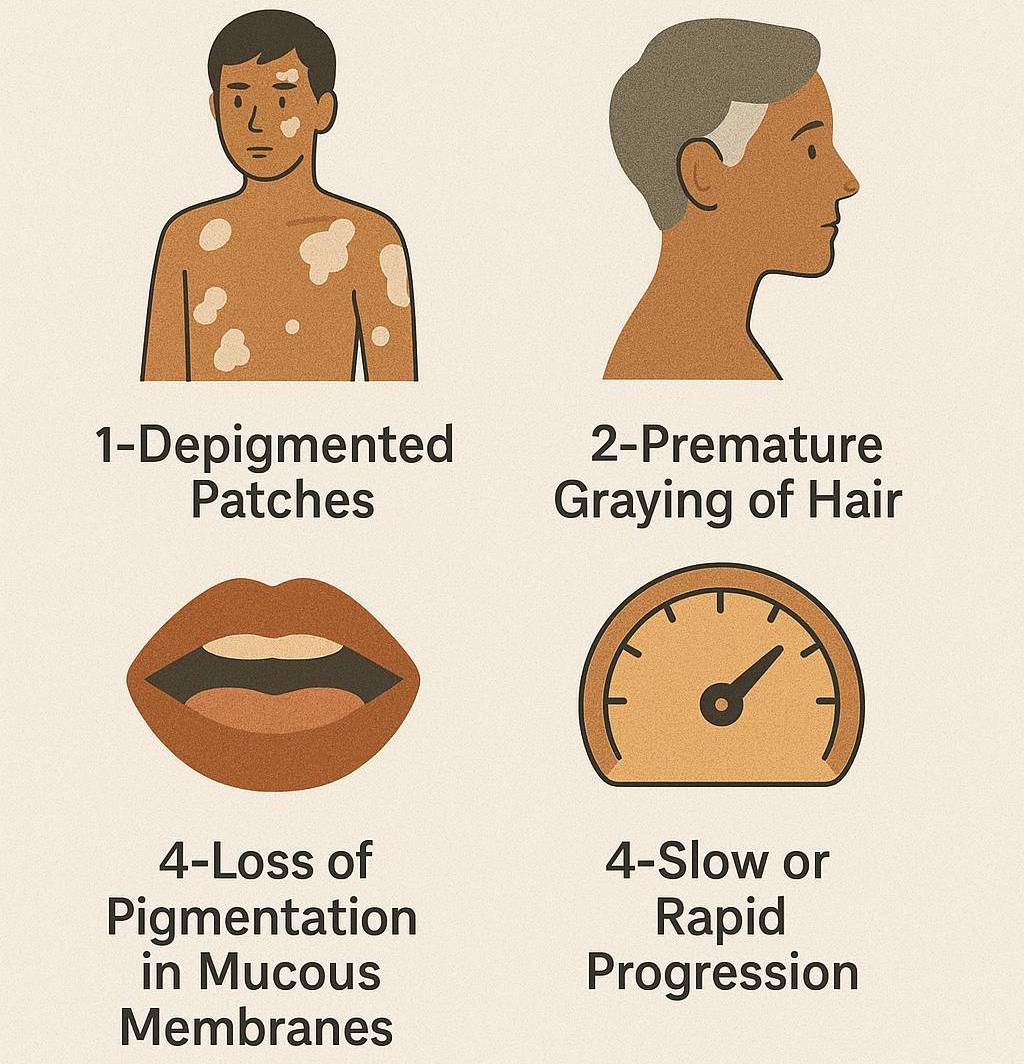What is Vitiligo?
Vitiligo is a skin disorder that causes loss of pigmentation, leading to white patches on different parts of the body. It occurs when melanocytes, the cells responsible for producing melanin (skin pigment), stop functioning or die. Vitiligo can affect the skin, hair, and even the inside of the mouth. While it is not contagious or life-threatening, it can impact a person’s self-confidence and emotional well-being.
Vitiligo can develop at any age but is more noticeable in individuals with darker skin tones. Although there is no permanent cure in modern medicine, Ayurvedic treatments aim to restore pigmentation by addressing the root cause of the disease.
Types of Vitiligo
The most common type, affecting multiple parts of the body. White patches appear symmetrically on both sides.
Affects only one side or part of the body. Spreads rapidly but usually stabilizes over time.
A few small patches appear in a localized area. Does not spread widely.
Affects the face, fingers, toes, and around the mouth and eyes.
Affects mucous membranes, such as the lips and inner mouth.
A rare form where more than 80% of the skin loses pigment.

What Causes Vitiligo?
- Autoimmune Disorders: The immune system mistakenly attacks and destroys melanocytes.
- Genetic Factors: Family history of vitiligo increases the risk.
- Environmental Triggers: Exposure to chemicals, sunburn, or skin trauma can trigger vitiligo.
- Stress and Emotional Imbalance: High stress levels can accelerate the spread of vitiligo.
- Nutritional Deficiencies: Lack of vitamins, especially B12, folic acid, and copper, may contribute to depigmentation.

Signs and Symptoms of Vitiligo
- Depigmented Patches: White spots on the skin, often beginning on hands, face, or around body openings.
- Premature Graying of Hair: Hair on the scalp, eyebrows, eyelashes, and beard may turn white early.
- Loss of Pigmentation in Mucous Membranes: White patches inside the mouth and nose.
- Slow or Rapid Progression: Patches may spread slowly over years or expand quickly in some cases.

When to See a Doctor?
If you notice unusual white patches on your skin, consult a dermatologist or Ayurvedic practitioner for proper diagnosis and treatment.
Ayurvedic Treatment for Vitiligo
- Bakuchi (Psoralea Corylifolia): Stimulates melanin production and repigmentation.
- Neem: Purifies blood and strengthens immunity.
- Turmeric (Haldi): Reduces inflammation and promotes healing.
- Manjistha: A powerful blood purifier that helps in skin regeneration.
- Guggulu: Supports skin healing and balances doshas.
- Vamana (Therapeutic Vomiting): Helps cleanse excess Kapha from the body.
- Virechana (Purgation Therapy): Eliminates Pitta-related toxins.
- Rakta Mokshana (Bloodletting Therapy): Purifies blood and improves skin pigmentation.
- Include foods rich in copper, iron, and antioxidants.
- Avoid sour, spicy, and processed foods that aggravate Pitta dosha.
- Drink copper-infused water – Store water in a copper vessel overnight and drink it in the morning.
- Consume fresh fruits and vegetables like carrots, beets, and figs, which promote melanin production.
- Practice Yoga & Meditation: Reduces stress and balances doshas.
- Sun Exposure: Moderate sunlight can help stimulate melanin production.
- Use Herbal Oils: Apply Bakuchi oil or coconut oil mixed with turmeric for skin healing.

Frequently Asked Questions (FAQs)
Ayurveda focuses on treating the root cause and managing vitiligo naturally. While results vary, consistent Ayurvedic treatment can help slow down or reverse depigmentation.
Vitiligo can run in families, but not everyone with a family history will develop the condition. Genetic and environmental factors play a role.
Yes, high stress levels can contribute to the onset or worsening of vitiligo by affecting immune function.
No, vitiligo is not contagious and cannot spread from person to person through touch or close contact.
Yes, Ayurveda recommends a balanced diet rich in antioxidants and specific nutrients to support melanin production.
Bakuchi oil, neem oil, and coconut oil with turmeric are commonly used in Ayurveda to help restore pigmentation.
Conclusion
Vitiligo is a skin condition that affects pigmentation but can be managed effectively with Ayurveda’s holistic approach. By incorporating herbal remedies, detoxification therapies, and a balanced diet, Ayurvedic treatment aims to restore skin health naturally.
